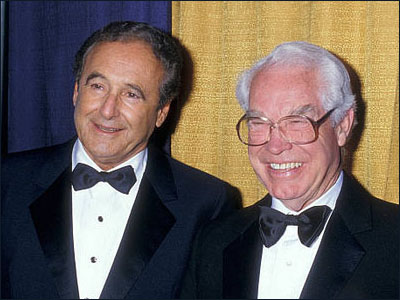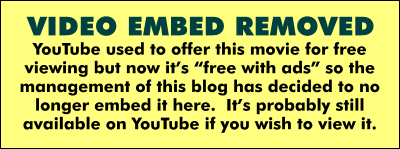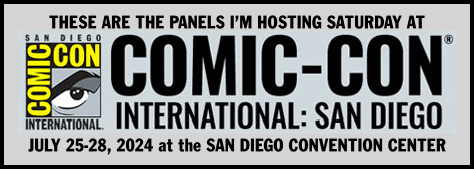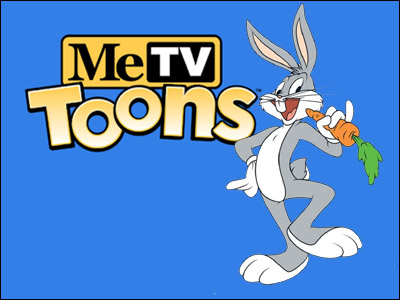Thursday, July 25 — 10:00 AM to 11:00 AM in Room 9
MEET MICHAEL HIRSH
Business Chief magazine called Michael Hirsh "The Father of Canadian Animation." He co-founded Nelvana, the firm responsible for animating such famous cartoon franchises as, among so many others, The Care Bears, Babar, Barbie, Max and Ruby, The Magic School Bus, Beetlejuice, The Adventures of Tintin, Franklin, Cyberchase, and The Berenstain Bears, along with such larger-than-life personalities as Roseanne Barr, Mr. T., Deborah Harry, and Tim Burton. How did he do it? That's the question your moderator Mark Evanier will be asking in this rare one-on-one interview.
Thursday, July 25 — 11:00 AM to NOON in Room 4
SPOTLIGHT ON JACK C. HARRIS
Jack C. Harris began writing and editing DC Comics in 1977; among the many comics he wrote and/or edited were Kamandi, Wonder Woman, House of Mystery, Sgt. Rock, Isis, Green Lantern, The Superman Family, The Unexpected, Weird War Tales, and Detective Comics. His work appeared later in Marvel Comics and Heavy Metal, among other publications. In short, he's been active in comics for decades, has worked with a wide range of editors, writers, and artists, and is a Comic-Con special guest. Here's your chance to hear him tell his experiences as he's interviewed by Mark Evanier.
Thursday, July 25 — 2:00 PM to 3:00 PM in Room 4
SPOTLIGHT ON KEN STEACY
Ken Steacy's visual storytelling career spans a half-century, as a writer, artist, art director, editor, and publisher. He has chronicled the exploits of Astro Boy, Iron Man, Harry Potter, and the Star Wars gang; and, in addition to producing his own IP, he has collaborated with Margaret Atwood, Harlan Ellison, and Trina Robbins. The recipient of an Eisner Award and an Inkpot Award, in 2009 Ken was inducted into the Joe Shuster Canadian Comic Book Hall of Fame, a lifetime achievement award for contributions to the industry. He'll be talking about all this and more in this spotlight when he is ruthlessly interrogated by Mark Evanier.
Thursday, July 25 — 3:00 PM to 4:00 PM in Room 4
SPOTLIGHT ON JO DUFFY
Jo Duffy has written comics including Power Man and Iron Fist, Catwoman, Batman, Wolverine, Fallen Angels, Nestrobber, Glory, Crystar, Elvira, Defenders, Punisher, and Star Wars, as well as the English-language edition of Akira. She has written short stories, essays, the comic book biography of Saint Francis, and an adaptation of Kipling's Jungle Book, and is the co-writer of two Puppet Master movies. She was the managing editor of Epic magazine and an editor at Marvel Comics, handling such titles as Elektra, Daredevil, Dreadstar, Groo, Doctor Strange, Hulk, and ROM. Hear about all this and more when she is interviewed in this spotlight by Mark Evanier.
Friday, July 26 — 10:30 AM to 10:30 AM in Room 10
THAT 70'S PANEL
It was a time of major change in the comic book business; of new talent coming in and the industry being rebuilt to come with a changing world and marketplace. Hear all about it from people who were in the middle of it: Gerry Conway (Amazing Spider-Man, The Punisher), Jo Duffy (Power Man and Iron Fist, Catwoman), Marv Wolfman (Tomb of Dracula, The New Teen Titans), Paul Levitz (The Legion of Super-Heroes, Stalker), and your moderator, Mark Evanier (Scooby Doo, Blackhawk).
Friday, July 26 — 12:30 PM to 1:30 PM in Room 10
THE GROO PANEL
Since 1982, fans have followed the bumbling, almost tragi-comic exploits of easily the stupidest, most destructive character in all of comics, Sergio Aragonés' Groo the Wanderer. So here's your opportunity to hear all about this unique, long-running comic book character from Carrie Strachan (colorist of Groo), Jo Duffy (one-time editor of Groo), and Mark Evanier (who has something to do with this comic and maybe he'll even tell everyone just what it is).
Friday, July 26 — 4:30 PM to 5:30 PM in Room 10
WALT KELLY AND POGO
Walt Kelly's Pogo was one of the greatest newspaper comic strips of all time and is now being reprinted in an award-winning series of volumes from Fantagraphics Books. What made the world fall in love with Pogo Possum, Albert Alligator, Howland Owl, Churchy LaFemme, Ma'm'selle Hepzibah, and the other denizens of Mr. Kelly's corner of the Okefenokee Swamp? That's the topic under discussion by cartoonists Patrick McDonnell (Mutts) and Rick Parker (Beavis and Butthead), historian Maggie Thompson, Walt Kelly archivist Jane Plunkett, and your moderator (and co-editor of the Complete Pogo), Mark Evanier.
Saturday, July 27 — 11:45 AM to 1:00 PM in Room 6BCF
QUICK DRAW!
It just might be the fastest, funniest panel at the entire Comic-Con! Three cartoonists (and a few guest cartoonists) whip up hilarious cartoons right before your eyes based on suggestions from the audience and your host, Mark Evanier. Competing this year, armed with nothing but their own wits and some Sharpies, are Scott Shaw! (The Flintstones, The Simpsons comic books), Lalo Alcaraz (award-winning political cartoonist and the man behind La Cucaracha), and Disney Legend Floyd Norman.
Saturday, July 27 — 1:00 PM to 2:30 PM in Room 6BCF
CARTOON VOICES I
Once again, moderator Mark Evanier convenes his popular panel of folks who speak for some of your favorite animated superstars and videogames. Demonstrating their craft this year on the Saturday panel are Neil Ross (Captain Planet, G.I. Joe), Piotr Michael (Young Jedi Adventures, Wizards: Tales of Arcadia), Secunda Wood (Gabby's Dollhouse, Fast & Furious Spy Racers), Julie Nathanson (Final Fantasy, Skylanders), Bob Bergen (Porky Pig, Tweety), and Isaac Robinson-Smith (X-Men '97, Voltron: Legendary Defender).
Saturday, July 27 — 4:30 PM to 5:30 PM in Room 7AB
THE HISTORY OF HANNA-BARBERA RECORDS
The legacy, voices, and music of Bill Hanna, Joe Barbera, and their collaborators are celebrated by host Mark Evanier and actor Tim Matheson (Jonny Quest, Space Ghost, Sinbad, Jr., Animal House, Virgin River), cartoon voice performer Katie Leigh, animator and animation historian and Comic-Con special guest Tom Sito, and author Greg Ehrbar (host of The Funtastic World of Hanna & Barbera podcast).
Sunday, July 28 — 10:00 AM to 11:15 AM in Room 5AB
THE ANNUAL JACK KIRBY TRIBUTE PANEL
Each year, we gather together folks who knew and/or were inspired by the man they call "The King of the Comics," Jack Kirby. If you're attending this convention, you have to know who he was and what he did. Talking Kirby this year will be cartoonists Patrick McDonnell (Mutts) and Rick Parker (Beavis and Butt-Head), Kirby family friend Dave Schwartz, former DC Comics president Paul Levitz, Jack's granddaughter Tracy Kirby, and your moderator, former Kirby assistant Mark Evanier.
Sunday, July 28 — 11:45 AM to 1:15 PM in Room 6A
CARTOON VOICES II
If you think the Saturday Cartoon Voices Panel was wonderful, wait'll you hear the Sunday one! Your moderator Mark Evanier has rounded up six more of the best folks who put the words into the mouths of your animated favorites. Come hear Debi Derryberry (Jimmy Neutron, Draculaura on Monster High), Daniel Ross (Donald Duck, The Tom and Jerry Show), Jim Meskimen (Thundercats, Avengers Assemble!), David Errigo, Jr. (Phineas and Ferb, Tiny Toons Looniversity), Debra Wilson (Baby Shark's Big Show!, Suicide Squad: Kill the Justice League), and Fred Tatasciore (Marvel's Moon Girl and Devil Dinosaur, Tiny Toons Looniversity).
Sunday, July 23 — 2:00 PM to 3:00 PM in Room 7AB
COVER STORY
Industry people will tell you that the single most important page in any comic book is the cover, and often more effort goes into the cover than into the rest of the comic. What does it take to conceive, design, and execute a great cover? That's the question your moderator Mark Evanier will put to four artists who've done them over and over: J. Scott Campbell and Comic-Con special guests Joe Jusko, Ken Steacy, and Klaus Janson.
Sunday, July 28 — 3:00 PM to 4:30 PM in Room 7AB
THE BUSINESS OF CARTOON VOICES
What does it take to establish and maintain a career doing voicework for animated cartoons and video games? There are plenty of coaches out there who will charge you a fortune for the kind of advice you'll get absolutely free at this panel. Your moderator Mark Evanier has assembled a panel of one of the top voiceover agents, Sam Frishman (C.E.S.D.) and three voice actors who work all the time: Gregg Berger, Debi Derryberry, and Debra Wilson. If you're interested in this profession, it's a must-attend!
Everything above — times, rooms, panelists, even how the moderator spells his name is subject to change. The entire programming schedule can be found and committed to memory on this page. During the con, I will not be one of those people sitting behind a table for any length of time signing stuff but come to one or more of the above panels and if there's time, I'll gladly autograph a few things for you if only to prove I know how to write my own name.











